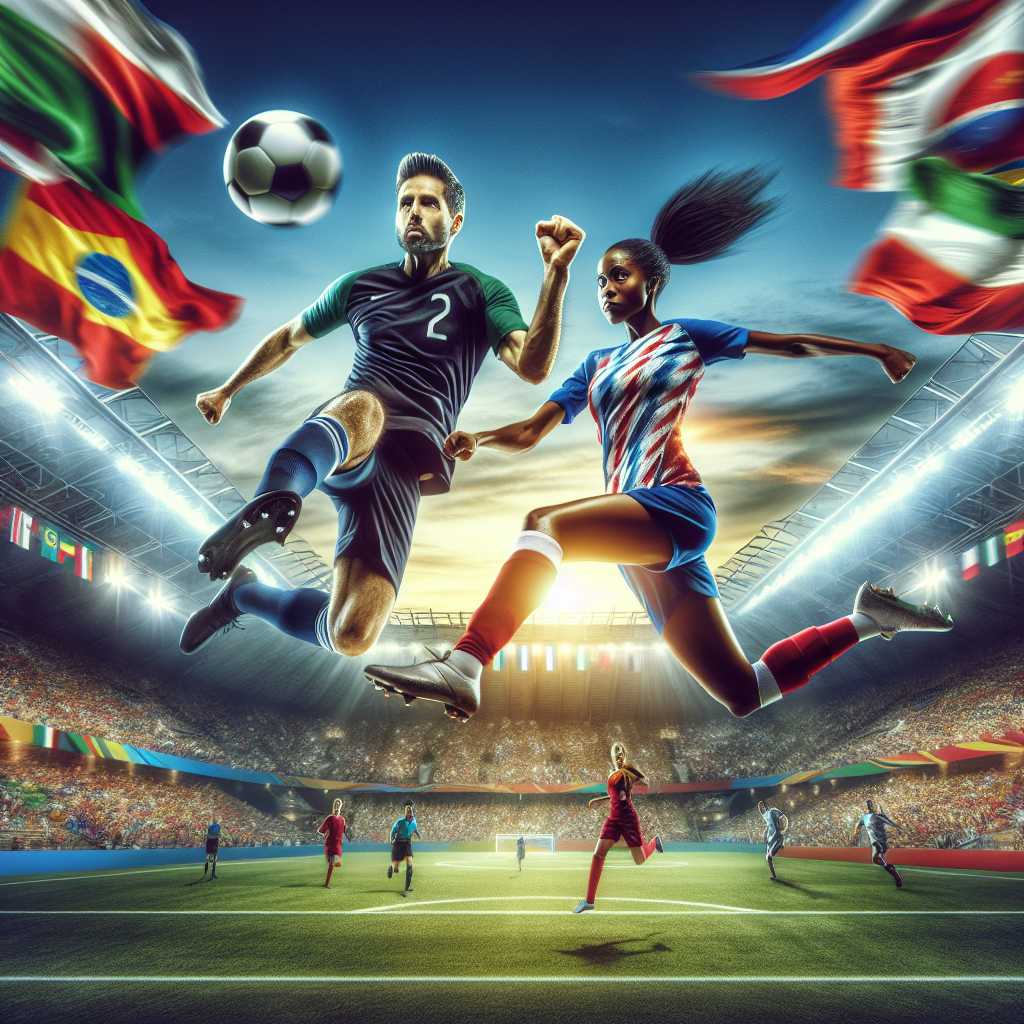The Allure and Intensity of Olympic Soccer: A Sport That Unites Nations
Soccer, or football, as it is known outside of North America, is not just a sport—it’s a global phenomenon that captivates millions across the world. The Olympic Games serve as a grand stage where the drama of soccer unfolds every four years, providing a platform for nations to showcase their talent and passion for the beautiful game. Unlike other international tournaments, Olympic soccer has unique characteristics and rules that distinguish it from events such as the FIFA World Cup.
Historical Kick-off: The Genesis of Olympic Soccer
Soccer has been a part of the Olympic fabric for over a century. The sport was first introduced at the Olympics in 1900, in Paris. Since then, it has undergone numerous transformations and has been held at every Summer Olympic Games, with the exception of Los Angeles 1932. Olympic soccer started as an amateur event but has now evolved into a competition that bridges the gap between the amateur and professional spheres, showcasing both young talent and experienced heads.
Men’s Olympic Soccer: Under-23 Stars and Over-age Exceptions
Men’s Olympic soccer is distinct from other major international tournaments largely due to age restrictions. Implemented to maintain a balance between development and competition, the men’s tournament generally features under-23 players. This rule was adopted after the 1992 Barcelona Olympics to differentiate the event from the World Cup and encourage the development of young talent.
Each nation is allowed three “overage” players—those who are over the age of 23—to add experience and leadership to their squads. This gives teams with modest footballing histories a chance to compete against established footballing nations, promoting greater parity and unpredictability in outcomes—an alluring aspect for fans and athletes alike.
Women’s Olympic Soccer: Full Senior Teams and Fierce Battles
Olympic soccer for women does not impose age restrictions on participating players. Instead, full senior national teams compete against one another. Having been introduced much later at the 1996 Atlanta Games, women’s Olympic soccer quickly rose in prestige and are often seen as equal to or sometimes even surpassing their male counterparts in terms of competition level and engagement.
High-profile teams from nations like the United States, Germany, Norway, Brazil, and Sweden have historically dominated women’s tournaments at the Games. The intense battles between these titans have made women’s Olympic soccer matches a must-watch spectacle indeed.
The Tournament Structure: Road to Olympic Glory
Organizing an Olympic soccer tournament requires navigating through qualification rounds before nations can grace the main stage. Depending on the continent, qualification tournaments or regional championships determine which teams earn their Olympic berths.
Once at the Olympics, both men’s and women’s tournaments follow a similar format—a group stage followed by knockout rounds culminating in medal matches. The intensity ramps up as teams strive to punch their tickets to each successive round, vying for not just personal glory but national pride.
Famed Encounters and Historical Matches
Olympic soccer has its fair share of historic matches and iconic moments that resonate through the annals of sporting history. From thrilling comebacks to jaw-drop talent displays by some of soccer’s greatest-up-and-coming stars—the Olympics have been a hotbed for moments that are inked forever in fans’ memories.
Future Projections: Evolution of Soccer at the Summer Games
The International Olympic Committee (IOC), along with FIFA, continually assesses and occasionally adjusts the format and rules governing Olympic soccer to ensure its relevance, competitiveness, and entertainment value remain high. Discussions about further professionalization, inclusivity, or expansion echo in boardrooms signaling that change may be afoot.
Olympic Soccer as a Pathway for Development and Diplomacy
Far beyond just crowning champions, Olympic soccer serves as an incubator for future professional superstars while becoming a unique diplomatic space where camaraderie between nations can flourish amidst competition. It allows emerging soccer nations to take center stage and sometimes challenge the traditional hierarchy of global soccer powerhouses.
Notes
*Image Description*
An image showing an intense moment during an Olympic soccer match — two athletes are seen in mid-action leaping high with eyes fixed on an incoming ball against the backdrop of a packed stadium awash with colors from flags representing various countries. The focus is on determination, athleticism, and international unity through sport.
